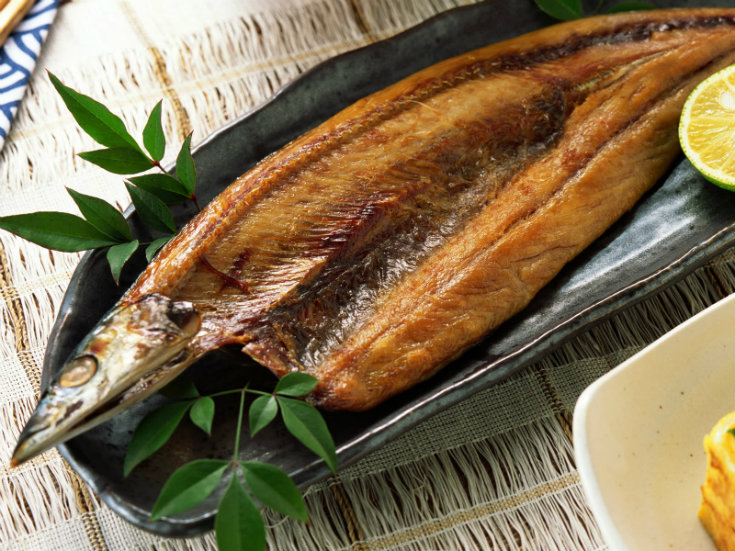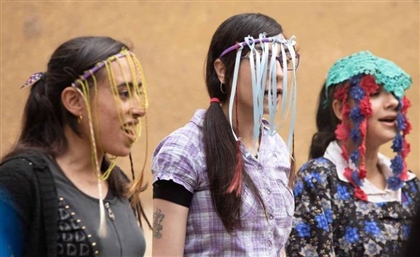Sham El Nessim's Roots in Ancient Egypt
Since the days of the ancient Egyptians have loved revolving celebrations around food. We dive into Sham El Nessim's history to find out how it all started and why it revolves around stinky fish.

If you think Egyptians have enviable party skills now, let it be known that the banquets, festivals, and celebrations held in ancient Egypt were far greater than any DJ at a club. Now that Sham El Nessim is upon us, we can’t help but mull over why this bittersweet and very pagan holiday is so beloved for all Egyptians irregardless of their background or ideology.
We know that the sole mention of Sham el Nessim makes a lot of people pinch their nose as they conjure up the mental image (or is it mental stench?) of feseekh and onions. And yet, think about it; here’s this mostly secular holiday, celebrated by pretty much everybody and that has survived for thousands of years that revolves around eating. What’s not to like about it?
Sham El Nessim, which means “smelling of the zephyr’’ in Arabic, is celebrated every year on the Monday after Eastern Orthodox/Coptic Easter. Although we don’t have much evidence about when this ancient tradition began, it's considered to be the oldest holiday in Egypt, estimated to date back to 2700 BCE.
Egypt (fondly referred to as Kemet back in the day), was a lush land with fertile soil. Local wine made out of grapes, pomegranate, dates and even beer could be found in abundance. Vegetables and fruits were plentiful and the people, rich and poor, enjoyed them extensively, especially at banquets where the wealth of food could be put on display. Much like today, people's lives revolved around food (except back then there was no pizza); the large-scale dinners and banquets of the past were great events where the wine flowed freely and the guests were entertained. Music accompanied the meal, with musicians of both genders singing and playing harps, lutes, drums, tambourines, and clappers.
Today, the most important ingredients for a perfect holiday meal are green onions, feseekh (salted, grey mullet) and hard boiled eggs, among a few other vegetables. Depending on where you are in Egypt, there may be additional dishes, such as sweet brioche in Alexandria or lupine beans in the villages, added to the feast.
Back in ancient Egypt, there were three main seasons, which revolved around the growing season: akhet (inundation), peret (sowing) and shemu (harvest). It's clear that the Nile played a central role in the lives of ancient Egyptians, as it was essential to agriculture and was seen as a life-giving source. Shemu, which bears a little similarity with the word Sham, was a particularly important time where farmers harvested their crops.

Shemu in hieroglyphs (aren’t the little Nile waves cute?)
Even as far as 16,000–10,500 BCE, a little archaeological site in Upper Egypt, called Wadi Kubanniya, showed that some settlement locations were designed based on the presence of fish. Egyptians harvested the fish after the Nile's water swelled into the flood planes, leaving fish trapped in shallow pools as the flood waters receded. It was practical for inhabitants to base their camps at the summits of the surrounding dunes in order to gather them, making use of the Nile's many gifts. 
This period was also symbolically important for the Egyptians who strongly believed in rebirth in the world. Just as the sun sets, it also rises; just as they believed we rose after death to live on in the afterlife. The Nile’s activities were seen as a cycle and so the association with the chaotic flood prior to the creation of the world (clear in the imagery of the flood receding and creation emerging) also highlighted the significance of the fish.
The idea of continuation and renewal was imperative. Namely, the tilapia, which represented both fertility and rebirth because of its mouth-brooding habit. The fish would take the fertilised eggs in its mouth until its children hatched. This was similar to the story of the Creation whee the god Amun took his seed in his mouth and spat out the world thus marking the beginning of everything. Tomb representations show that fish was often dried. Eggs also symbolised new life and new creation. Onions were also quite common and were used for uses beyond food (they were even used for pregnancy tests where women had to insert them in their vagina!).

Interestingly enough, it was mentioned in the Bible how the Israelites complained when they wandered into the desert, lamenting the good food they had become familiar with, "We remember the fish which we used to eat free in Egypt, the cucumbers, and the melons and the leeks and the onions and the garlic’’ (Numbers 11:5).
The leafy greens, such as fuul hirati, or lettuce, represented fertility; the latter was a particularly strong symbol of semen because of the white liquid it discharges when broken. Naturally, all of these foods seemed idyllic for the ancient Egyptians in celebrating fertility and renewal at the time of spring.
As the day approaches soon enough, one is made to think about the wonders of tradition and where symbolism behind what we eat originated from. The Egyptians, surely, gave us a fascinating reason to unite in celebration even if it is, much to the annoyance of many, over putrid and possibly lethal feseekh.
- Previous Article VIDEO: Foreigners Try 'Feseekh' For The First Time
- Next Article 7 Things College Dropouts in Egypt Are Tired of Hearing
























